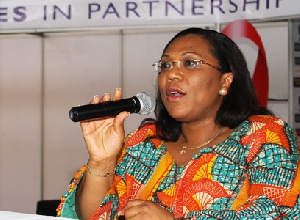 Dr. Angela El-Adas, Director General of the Ghana AIDS Commission
Dr. Angela El-Adas, Director General of the Ghana AIDS Commission
Dr. Angela El-Adas, Director General of the Ghana AIDS Commission, has stated that the Commission did not have the financial capacity to conduct experiments on drugs that would permanently cure HIV and AIDS.
She noted that though various quarters within the traditional and religious circles had proclaimed one cure or the other for the epidemic, these allegations could not be substantiated in the research institutions in the country, adding, “We are yet to find any cure for the disease”.
Dr. El-Adas was responding to a question during the interactive session of the Western Regional Dissemination of the National HIV and AIDS Strategic Plan 2016-2020 in Takoradi.
She explained that the HIV and AIDS virus was a retrovirus, which changed form at any given time, thereby making the work of scientists even more difficult to produce a vaccine or a complete cure for it.
Dr. Roland Sowah, Western Regional HIV /AIDS Coordinator, mentioned that numerous attempts to follow up on herbalists who professed cure for the epidemic at Noguchi, Mampong and other research facilities had not yielded the desired results.
He, therefore, advised such herbalists to stop cashing in on the innocence and desperation of victims of the disease.
The National Strategic Plan (NSP), according to Dr. El-Adas, had documented lessons from previous plans to help improve the quality of response as well as preventing new infections.
Highlights of the plan looks at the High Impact activities such as behavioural change interventions, promotion of condoms and lubricants, concentration on key population, treatment and care for all to ensure universal access and equity.
It would also look at the elimination of mother-to-child transmission of HIV and programmes to fast track the 90-90-90 targets, which aims at ensuring access to care by victims to help reduce viral load.
The NSP would achieve its set targets by strengthened health systems, increased health facilities and staff as well as piloting self-testing and peer-led testing for HIV.
Currently, the Regional Prevalence rate had reduced from 2.4 per cent to two percent.